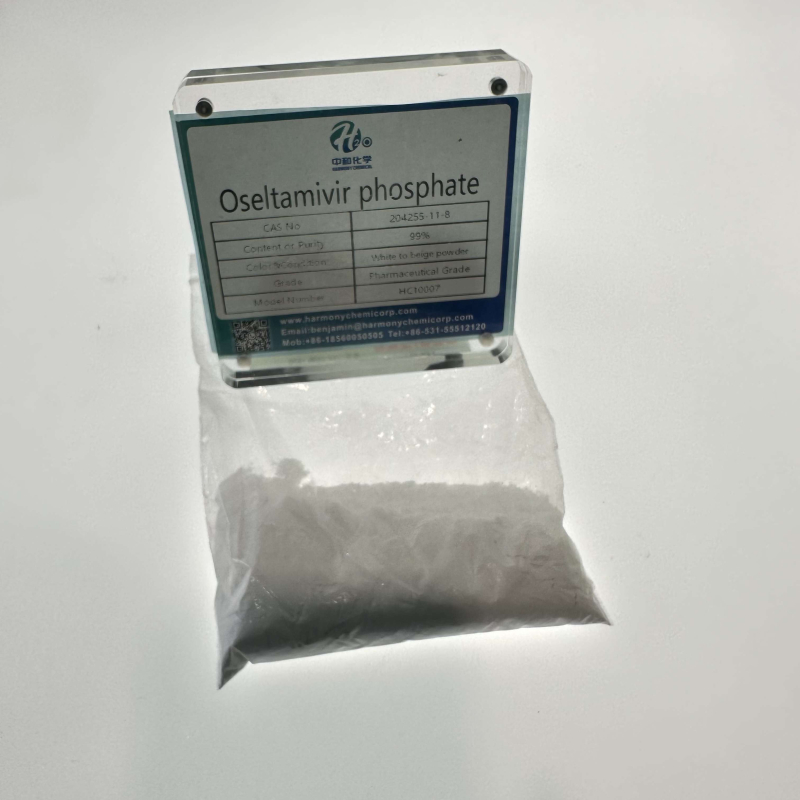Epidural AdministrationofRopivacainehydrochloride monohydrate effectivelyblockneuroethicpain(bothmechanicalallodyniaandheathyperalgesia)withoutinductionfanalgesictoleranceandsignificantlydelaystheevelopment ofneuropathicpain producedbyperipheral nervenjury.Ropivacainehydrochloride inhibitionpressure-inducedincreasesinfiltrationcoefficient(Kf)withoutaffectingpulmonaryarterypressure (Ppa), Pulmonary capillary pressures(Ppc),andzonalcharacteristics(ZC).Ropivacaine hydrochloride monohydrate preventspressure-induced lungedemansociatedhyperpermeability yasevidencebymaintainingPaO2,lungwet-to-dryrati
Contact Now
Tetracaine hydrochloride is used for mucosal floor anesthesia, conduction anesthesia, epidural anesthesia, and subarachnoid anesthesia; Used for ophthalmic floor anesthesia, barring constricting blood vessels, detrimental corneal epithelium, and growing intraocular pressure.nameTetracaine hydrochlorideCAS NO136-47-0Molecular formulaC15H25ClN2O2melting point149°Cdensity1.1279 (rough estimateStorage conditions2-8°Csolubilityalcohol: solublesoluble 40 parts of solventformneatcolourWhite to Almost whiteSOLUBLESoluble in water at 50mg/ml
Contact Now
namePropitocaine hydrochlorideCAS NO1786-81-8Molecular formulaC13H21ClN2Omolecular weight256.77melting point168-170°CStorage conditions2-8°CsolubilityFreely soluble in water and in ethanol (96 per cent), very slightly soluble in acetoneformneatcolourWhite to Off-WhitePrilocaine hydrochloride is a kind of local anesthetic of aminoamide. Pirocaine is commonly used in dentistry. Procaine is also often used in combination with Lidocaine as a preparation for skin anesthesia (Lidocaine/Procaine or EMLA) to treat sensory abnormalities and other conditions.
Contact Now
nameLevamisole hydrochlorideCAS NO16595-80-5Molecular formulaC11H13ClN2Smolecular weight240.75melting point266-267 °Cflash point9℃Storage conditions2-8°Crefractivity-126 ° (C=1, H2O)formCrystalline PowdercolourWhite to almost white
Contact Now
melting point86-88 °C(lit.)Storage conditions2-8°CformPowdercolourWhite to off-whitepH value4.0 to 6.5(50g/L, 25 ℃)SOLUBLEsolubleCAS NO1670-14-0Molecular formulaC7H9ClN2molecular weight156.61EINECS number216-795-4
Contact Now
nameUrapidil hydrochlorideCAS NO64887-14-5Molecular formulaC20H30ClN5O3molecular weight423.94melting point156-1580CStorage conditionsKeep in dark place,Inert atmosphere,Room temperaturesolubilityH2O: solubleformsolidcolourwhiteSOLUBLESoluble to 50 mM in water
Contact Now
nameDapoxetine hydrochlorideCAS NO129938-20-1Molecular formulaC21H24ClNOmolecular weight341.88melting point175-1790CStorage conditionsroom tempformpowdercolourwhitesolubilityDMSO: ≥20mg/mL
Contact Now
nameLinocaine hydrochlorideCAS NO6108-05-0Molecular formulaC14H25ClN2O2molecular weight288.82melting point75-79℃Storage conditions2-8°CsolubilityH2O: solubleformsolidcolourwhiteSOLUBLESoluble in water (50 mg/ml), chloroform, ethanol, and benzene. Insoluble in diethyl ether.
Contact Now
namePramoxine hydrochlorideCAS NO637-58-1Molecular formulaC17H28ClNO3molecular weight329.86melting point181-183°Storage conditionsInert atmosphere,Room TemperaturesolubilityChloroform (Slightly), Methanol (Slightly)formneatcolourWhite to Off-White
Contact Now
Melting Point180-185 °C(lit.)Density1.18 g/mL at 25 °C(lit.)Refractivityn20/D 1.465Storage Conditionsroom tempSolubilityH2O: 6 M, clear, colorlessFormCrystalsColourWhite to slightly yellowPh Value4.5-5.5 (100g/l, H2O, 20℃)1. It can be used as an intermediate in medicine, pesticides, dyes, and different natural synthesis.
Contact Now
nameEsmolol hydrochlorideCAS NO81161-17-3Molecular formulaC16H26ClNO4molecular weight331.83melting point48-50°Cdensity1.026Storage conditions−20°CsolubilityH2O: soluble12mg/mLformbuffered aqueous solutioncolourWhite to Off-White
Contact Now
CAS NO204255-11-8Molecular formulaC16H31N2O8Pmelting point196-198°CsolubilityH2O: soluble30mg/mLformpowdercolourwhite to beigeSOLUBLESoluble in water (75 mM)optical activity[α]/D -26 to -36°, c = 1 in H2OPharmacological motion Oseltamivir phosphate is the drug precursor of its Active metabolite, and its Active metabolite (Oseltamivir Carboxylate) is a selective influenza virus Neuraminidase inhibitor. Neuraminidase is a glycoprotein on the floor of viruses.
Contact Now
AppearanceAmber obvious liquidSolid content% ≥ 40.0Density (20 ℃)g/cm3 ≥ 1.20PH fee (1% aqueous solution)9.0-11.0Solubility15gPolyaspartic acid (PASP) belongs to a crew of polyamino acids. Polyaspartic acid is susceptible to breakage due to the motion of microorganisms, fungi, and different factors, ensuing in the degradation of environmentally pleasant ammonia, carbon dioxide, and water. Therefore, polyaspartic acid has a extensive vary of uses.
Contact Now
Usage 1: Used as uncooked substances for photosensitive nylon and photosensitive plastics, constructing grouting materials, and additionally for photography, printing, plate making, etc.Usage 2: It can be used as a water blocking off agent in oilfield drilling operations and development grouting operations, as properly as as as a crosslinking agent in the synthesis of acrylic resin and adhesives.Usage 3: Used as an essential cloth for isolating amino acids and as an vital uncooked fabric&nb
Contact Now
nameTriisobutyl phosphateCAS NO126-71-6Molecular formulaC12H27O4Pmolecular weightv266.31boiling point~205 °Cdensity0.965 g/mL at 20 °CStorage conditionsStore below +30°C.solubility0.26g/lformOilcolourColourless
Contact Now
Mainly used in PVC molding methods such as rolling, injection, blow molding, and extrusionAs a catalyst, the paint and coating comprise DBT compounds; Soft polyvinyl chloride (PVC) profiles, whether or not they are gentle or extruded collectively with challenging PVC; Outdoor fabric are included with PVC containing DBT compounds as stabilizers on their surfaces;Pipes, drainage ditches, and home equipment used for out of doors rainwater, as nicely as protecting substances
Contact Now
N-methylpyrrolidone is referred to as NMP, molecular formula: C5H9NO, English: 1-Methyl-2-pyrrolidinone, the look is colorless to mild yellow obvious liquid, barely with the odor of ammonia, miscible with water in any proportion, soluble in ether, acetone and ester, haloalkane, fragrant hydrocarbon and different natural solvents, nearly totally combined with all solvents, boiling factor 204 ℃, flash factor ninety one ℃, sturdy hygroscopicity, steady chemic
Contact Now
Melting point<-40°CBoiling point265 °C10 mm HgDensity1.143 g/mL at 25 °CVapor pressure0.03 mm Hg ( 25 °C)Refractivityn20/D 1.555Flash point>230 °FStorage conditionsStore below +30°CSolubilityorganic solvents: miscible Emergency ManagementLeakage emergency responseQuickly evacuate personnel from the contaminated location to a protected area, isolate them, and strictly prevent entry and exit. Cut off the ignition source.
Contact Now
nameAdmireCAS NO105827-78-9Molecular formulaC9H10ClN5O2molecular weight255.66melting point136-144°Cdensity1.542formWhite crystallineVapor pressure2×10-7Pa (20℃)
Contact Now
CAS NO90-15-3Molecular formulaC10H8Omelting point94-96 °Cboiling point278-280 °Cdensity1.224flash point125 °CStorage conditionsStore below +30°CsolubilitySoluble in benzene, chloroform, ether and ethanol.formCrystalline Flakescolourwhite to off-white
Contact Now
nameTopiroxostatCAS NO577778-58-6Molecular formulaC13H8N6molecular weight248.24boiling point594.7±60.0 °C(Predicted)density1.45±0.1 g/cm3(Predicted)Storage conditionsStore at -20°CsolubilityDMSO : 23.5 mg/mL (94.67 mM; Need ultrasonic and warming)Acidity coefficient (pKa)7.47±0.10(Predicted)formPowder
Contact Now
Prilocaine is an amide type close by anesthetic. Its anesthetic depth and pace are similar to Lidocaine, alternatively its size is prolonged and its vasodilation have an impact on is weak. The toxicity is limit than lidocaine. Clinically used for close by anesthesia, specially fantastic for victims who hold away from the utilization of adrenaline.namePrilocaineCAS NO721-50-6Molecular formulaC13H20N2Omelting point37-38°boiling pointbp0.1 159-162°density1.0117 (rough estimate)refractivitynD20 1.5298Storage conditions2-8°CformCrystalline powderSOLUBLE6.169g/L(25 ºC)
Contact Now
nameCupferronCAS NO135-20-6Molecular formulaC6H9N3O2molecular weight155.15melting point150-155 °C (dec.)boiling point278.95°C (rough estimate)density1.3092 (rough estimate)Storage conditions2-8°CformPowdercolourNeedles from water
Contact Now
nameLOXO-292CAS NO2152628-33-4Molecular formulaC29H31N7O3molecular weight525.6density1.36±0.1 g/cm3(Predicted)Storage conditionsStore at -20°CformA crystalline solidAcidity coefficient (pKa)14.00±0.29(Predicted)
Contact Now




























